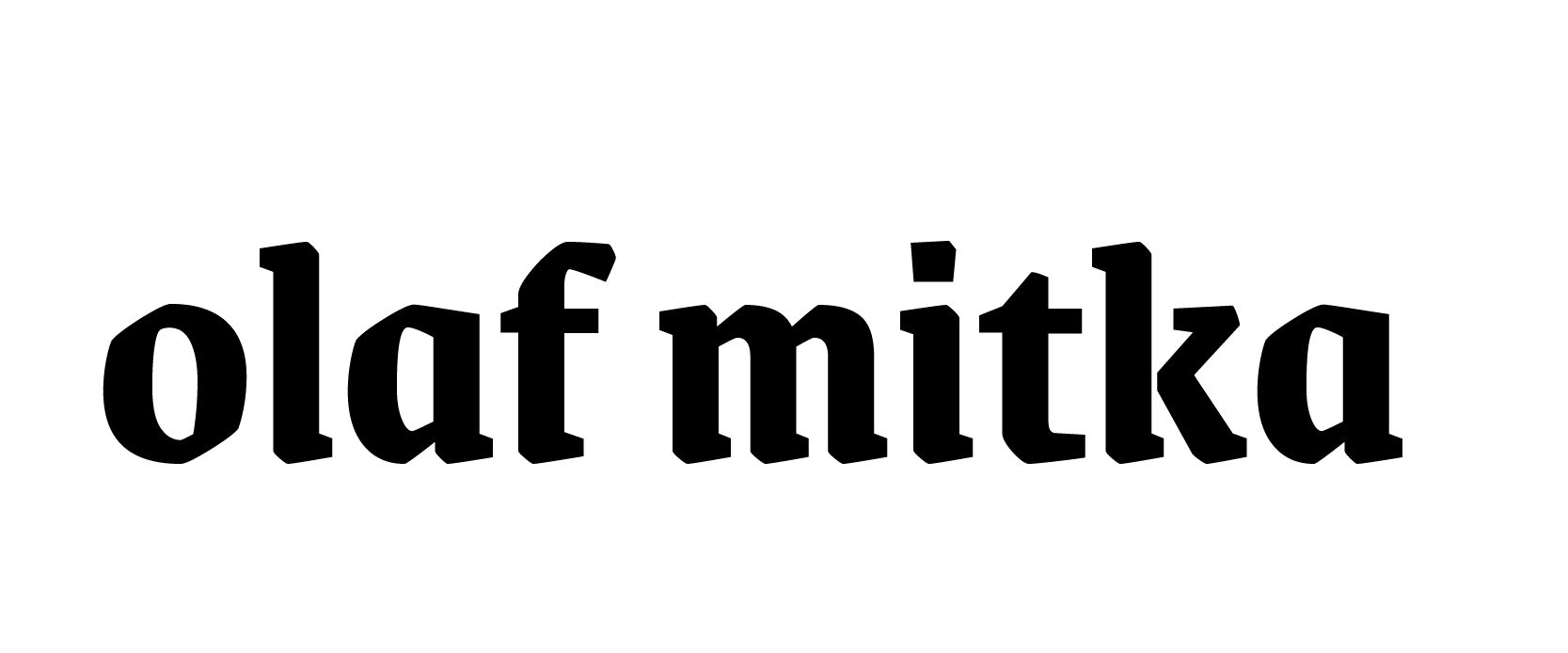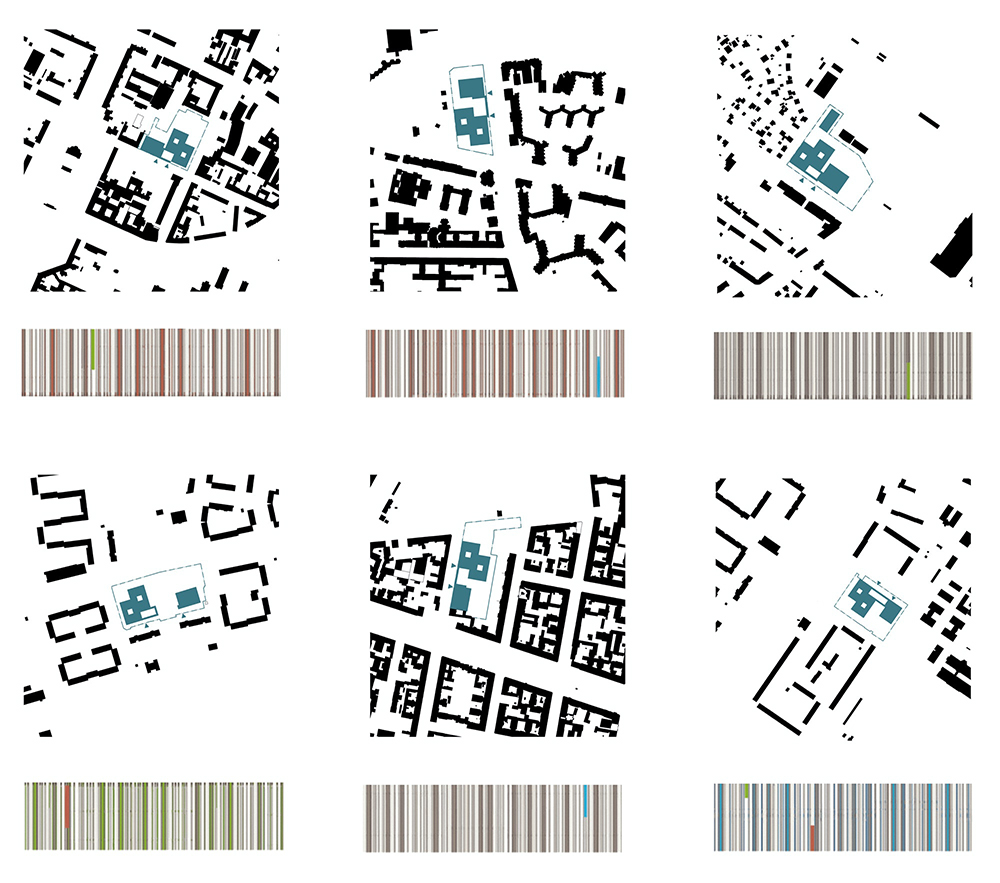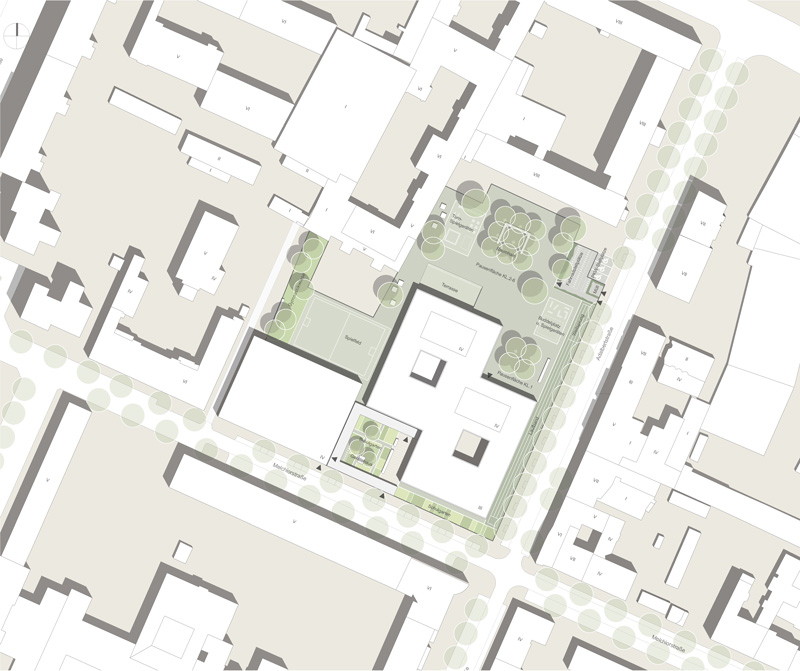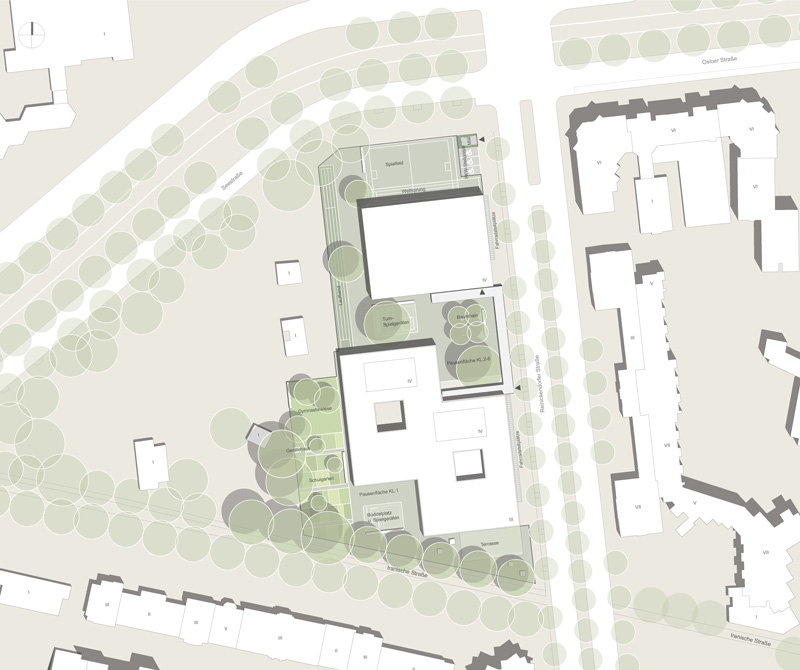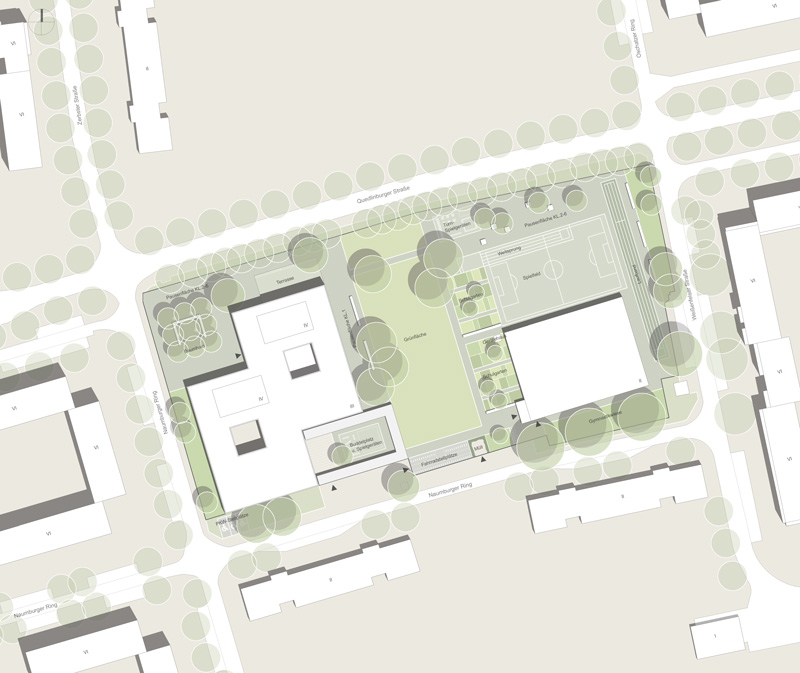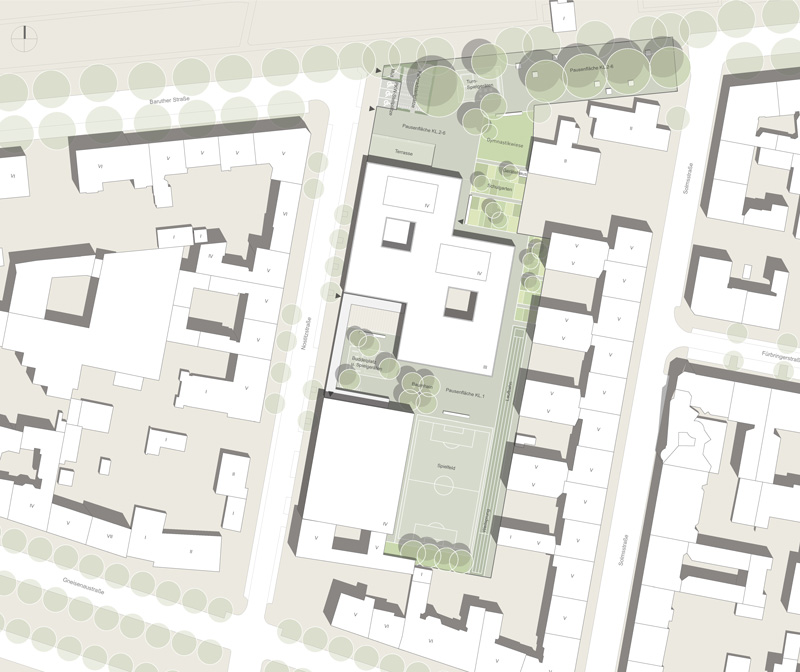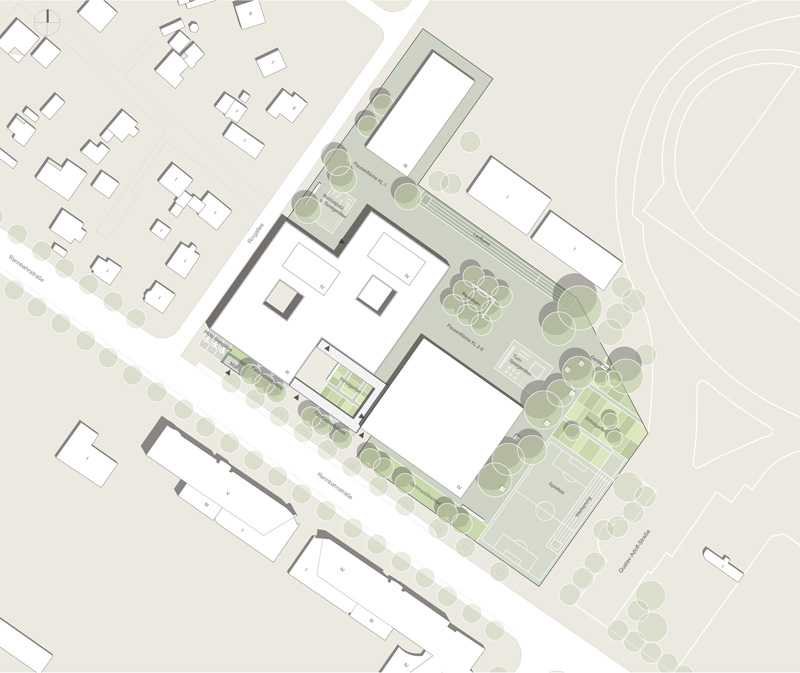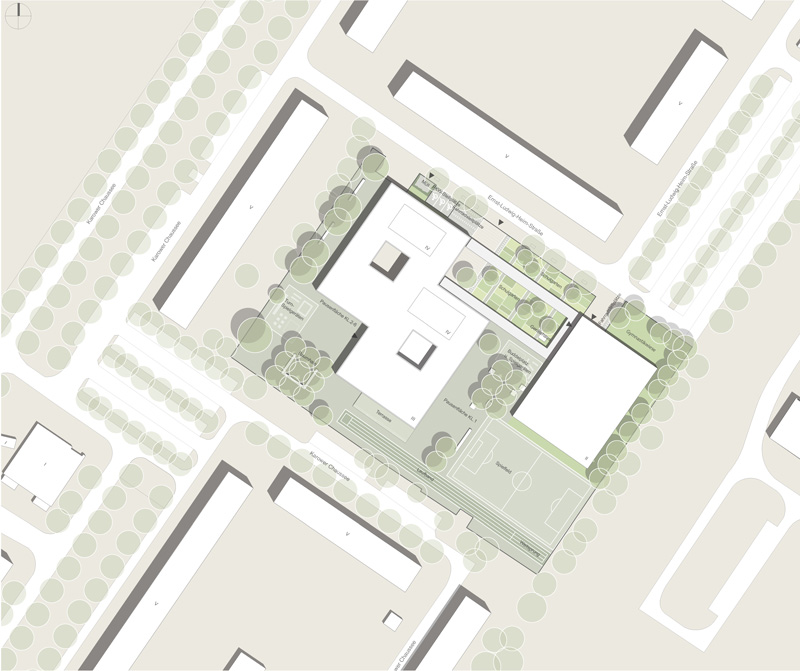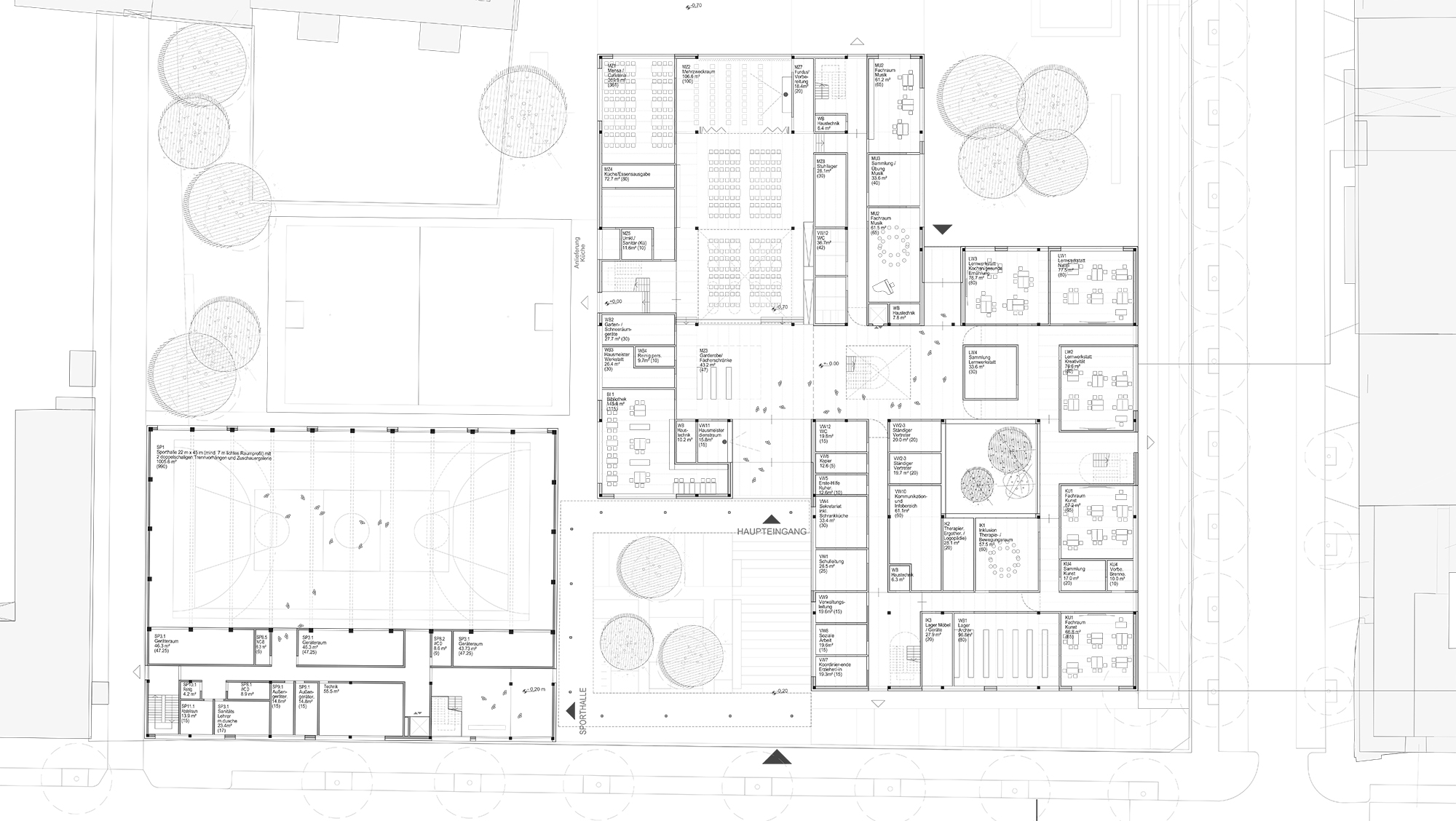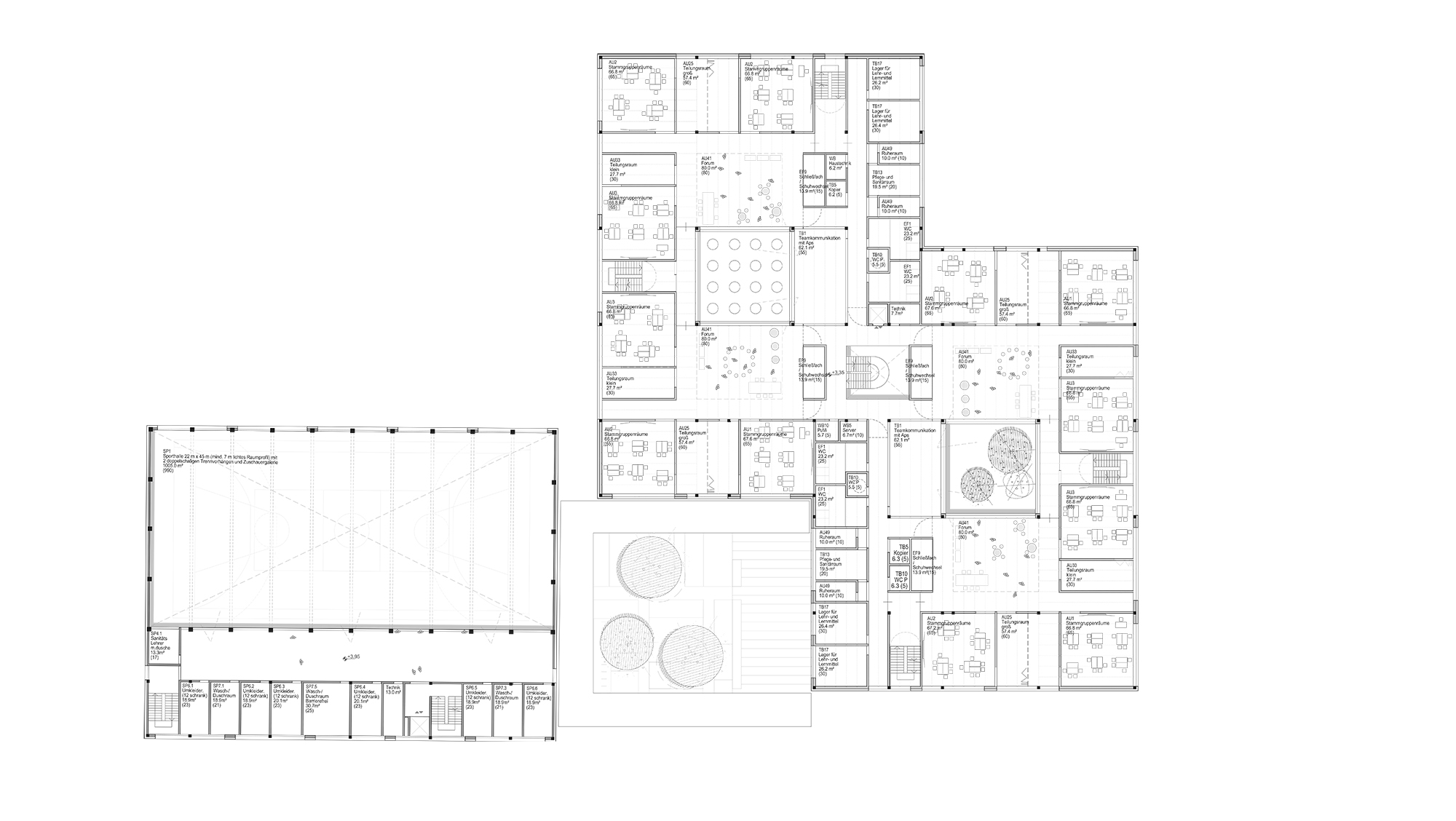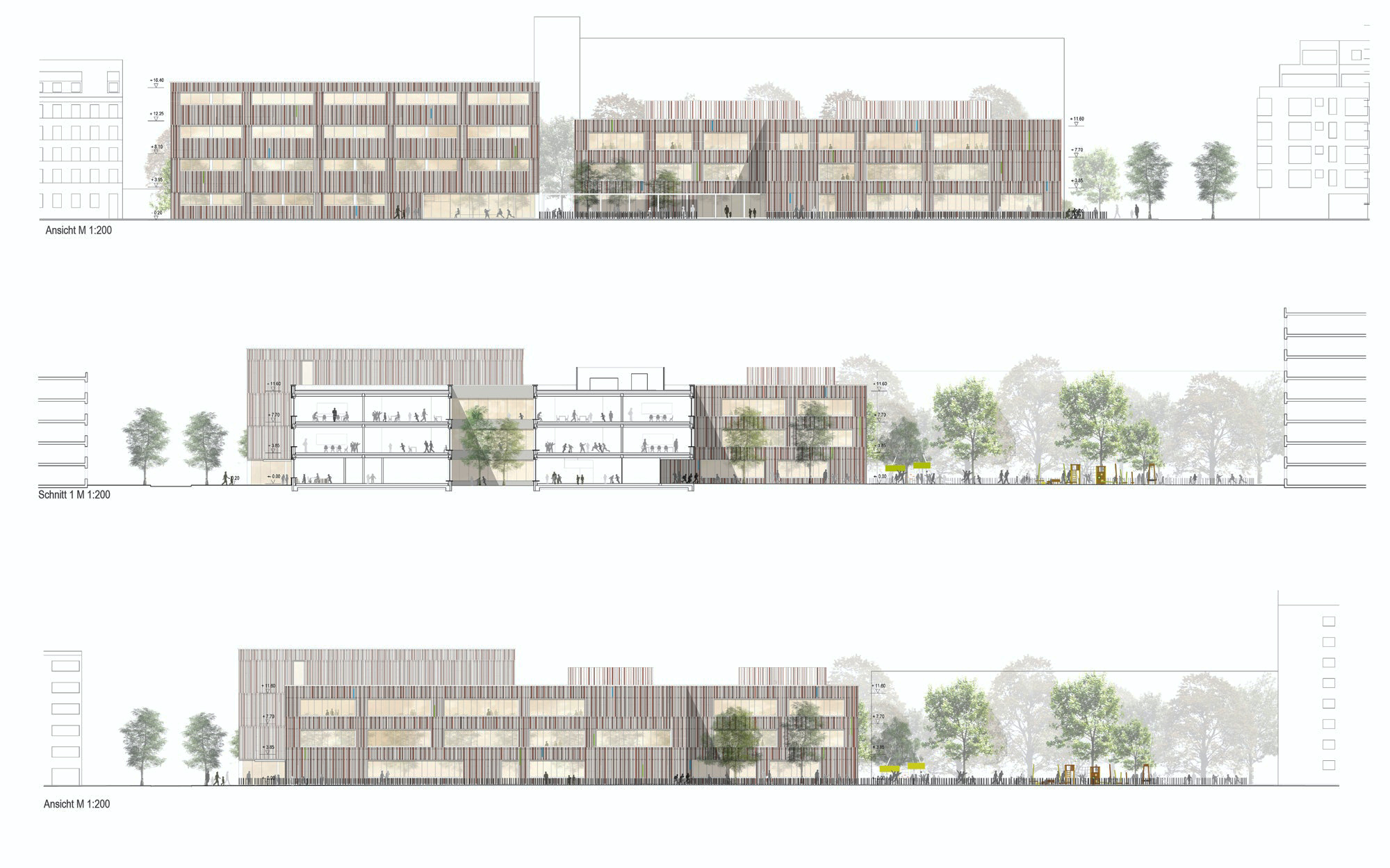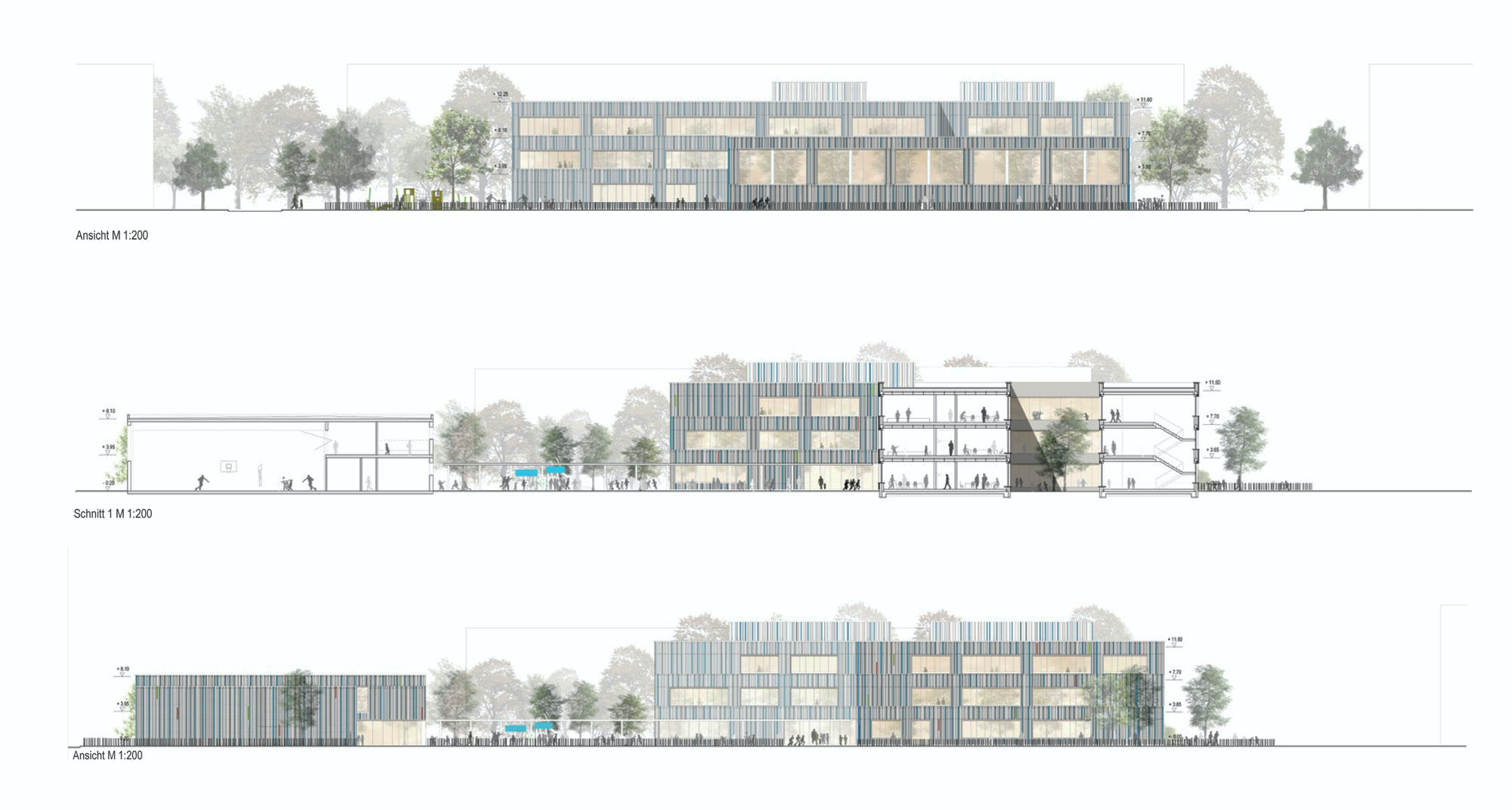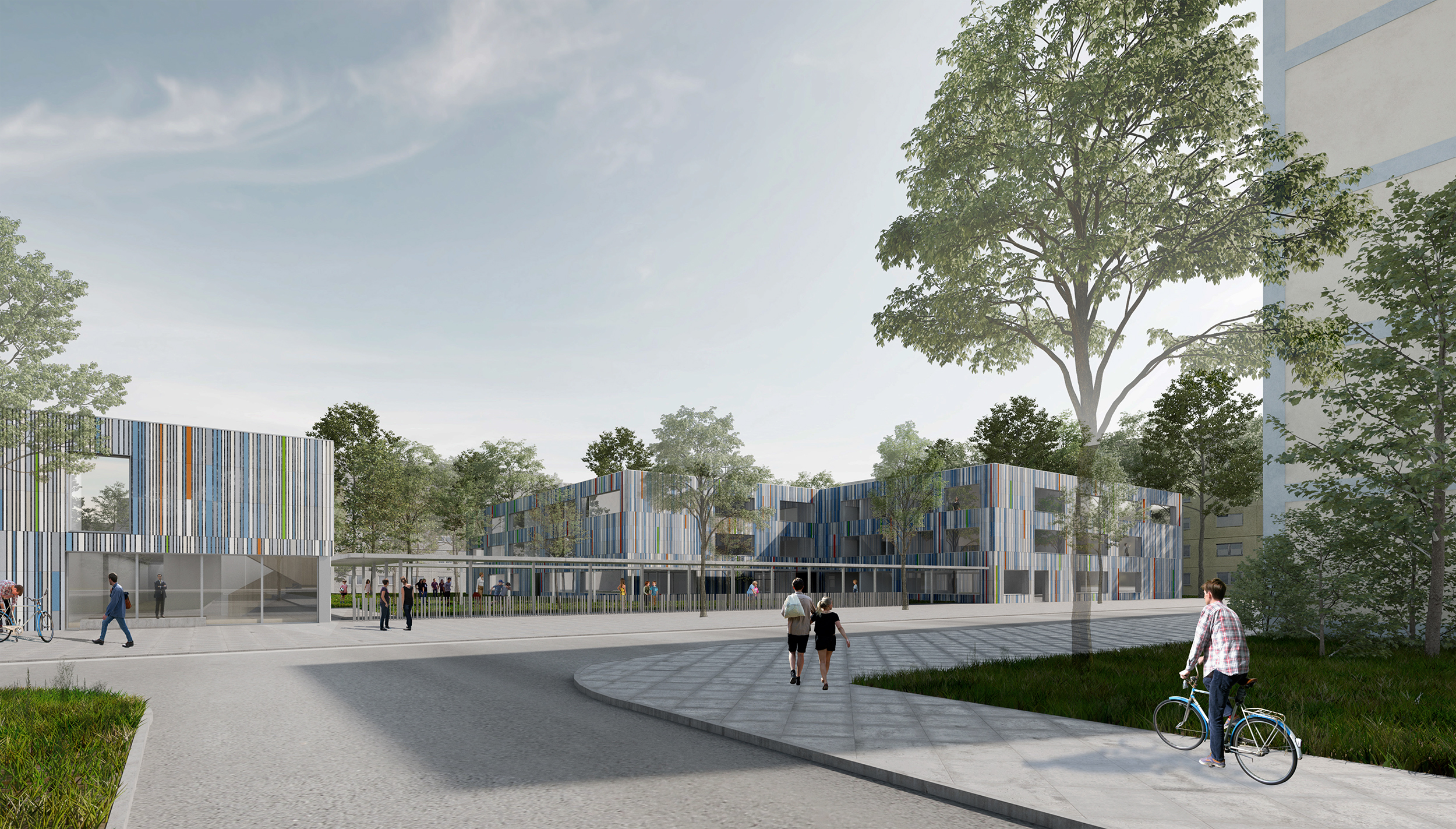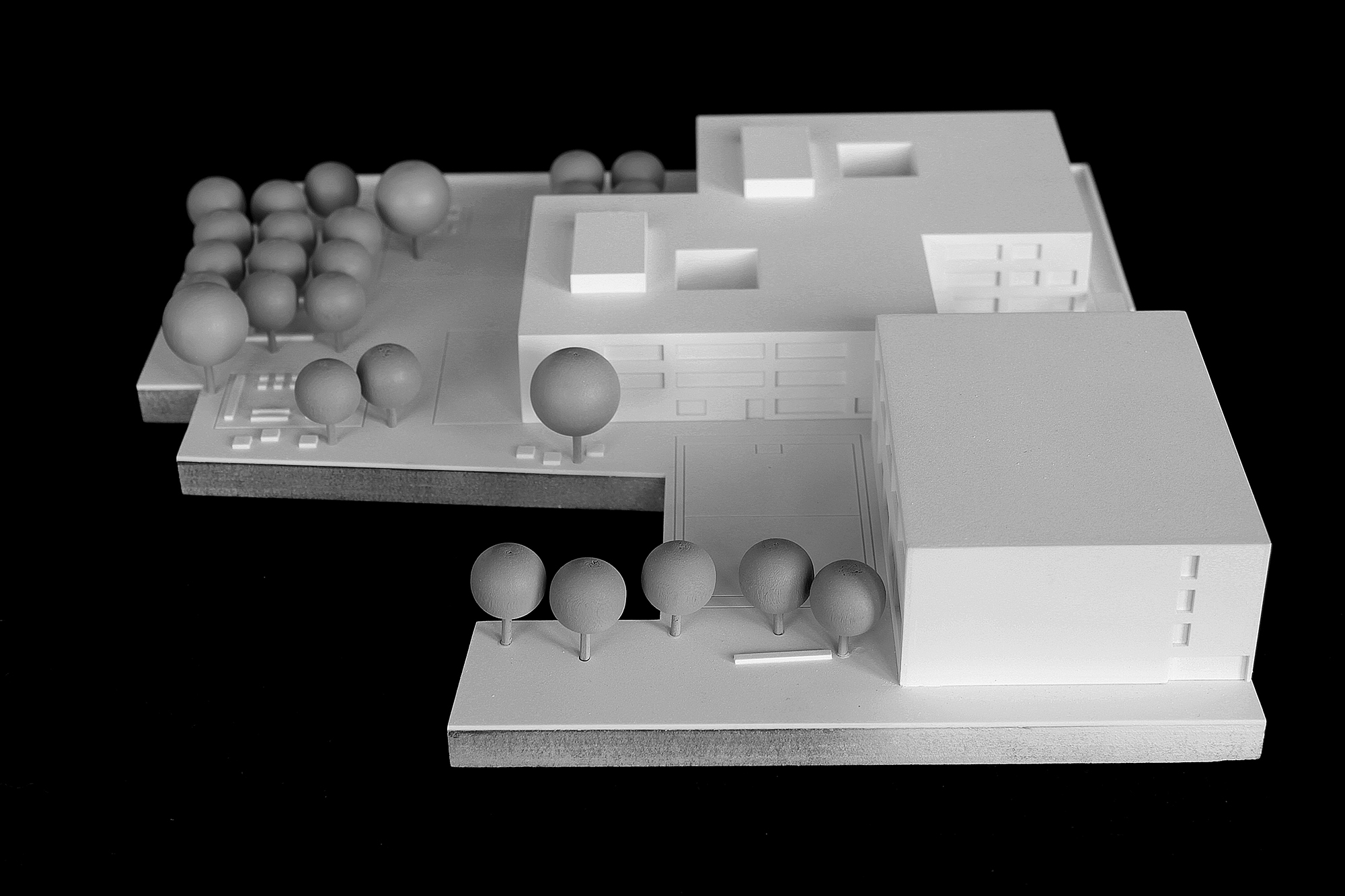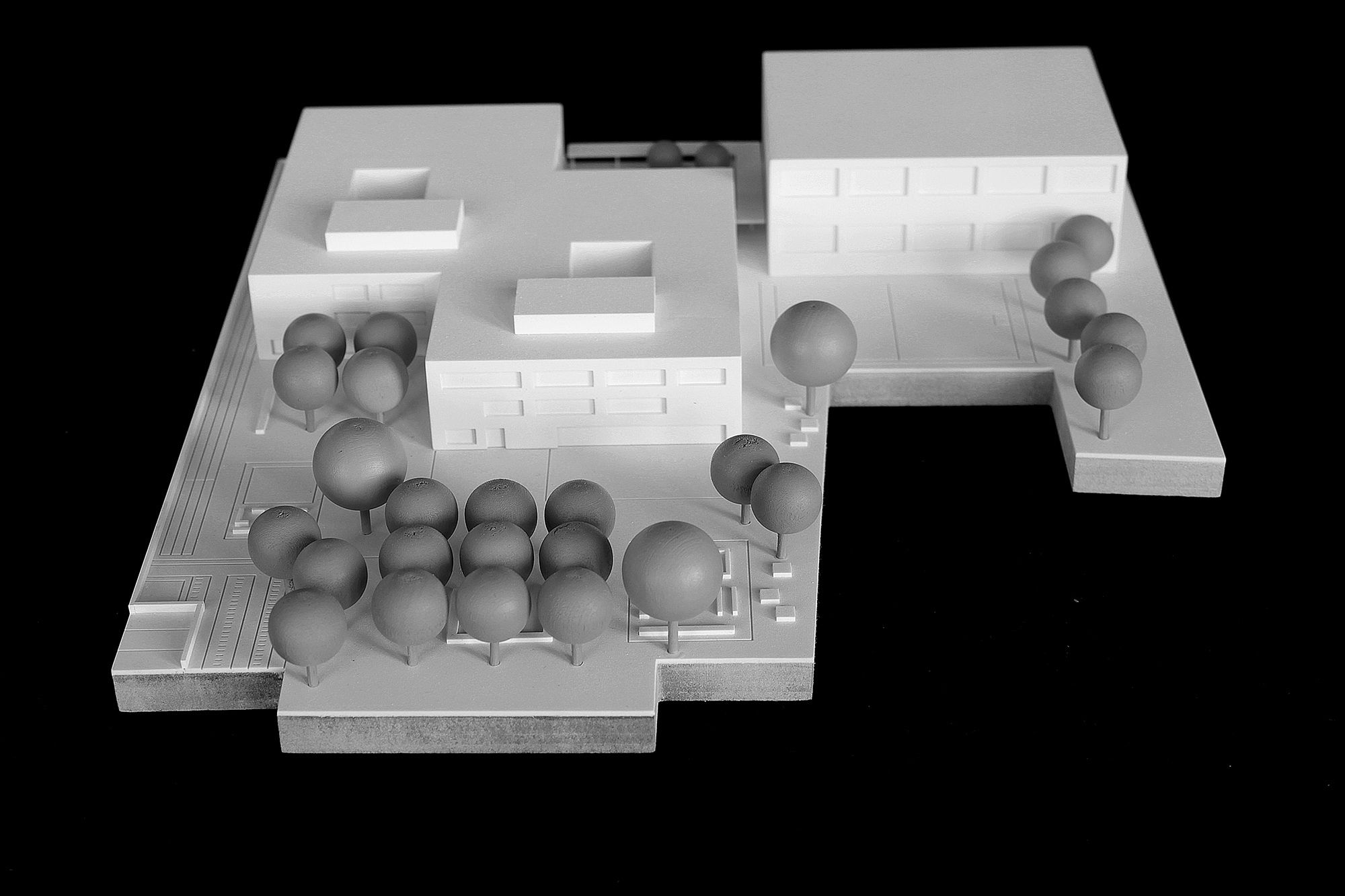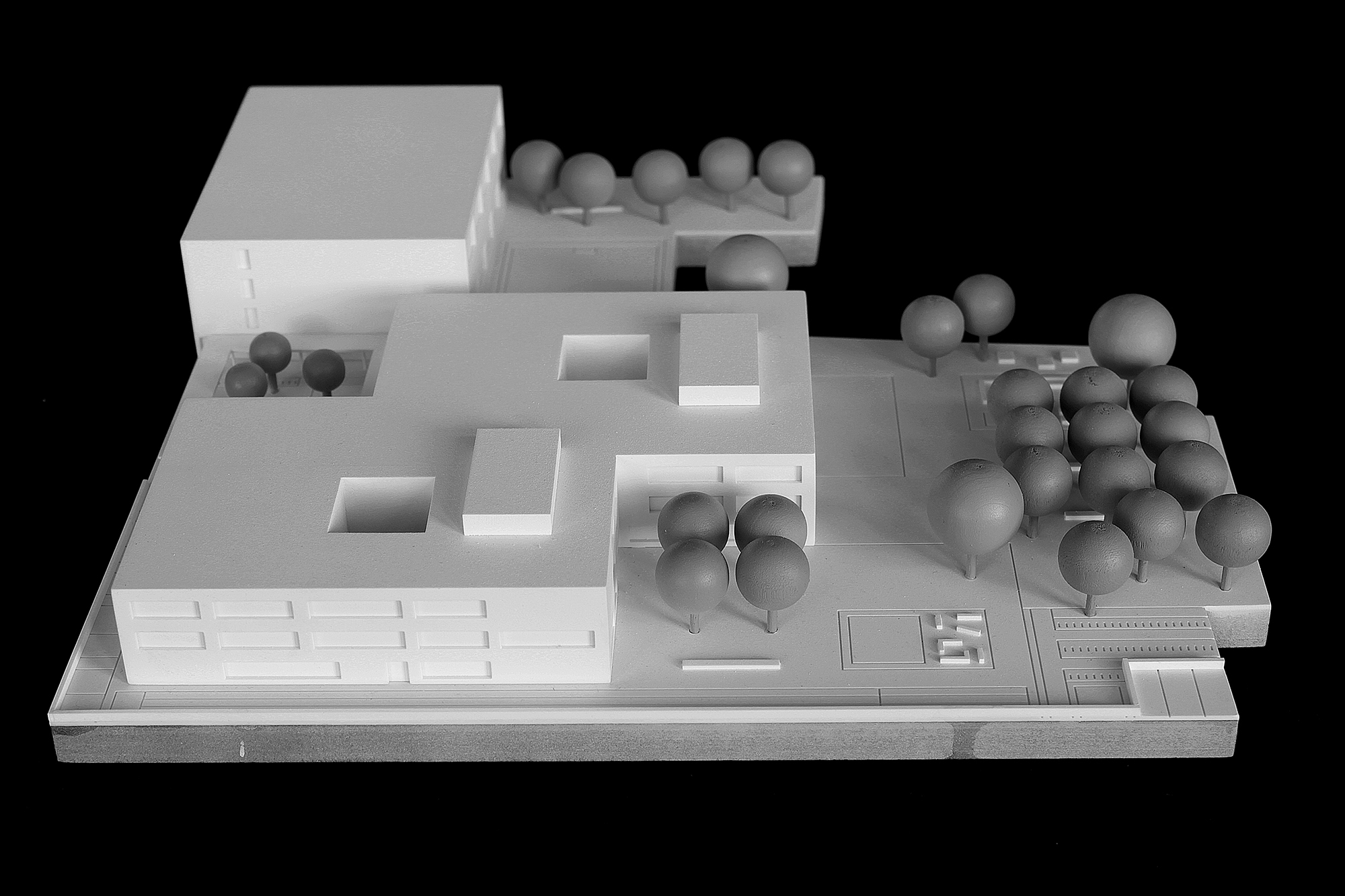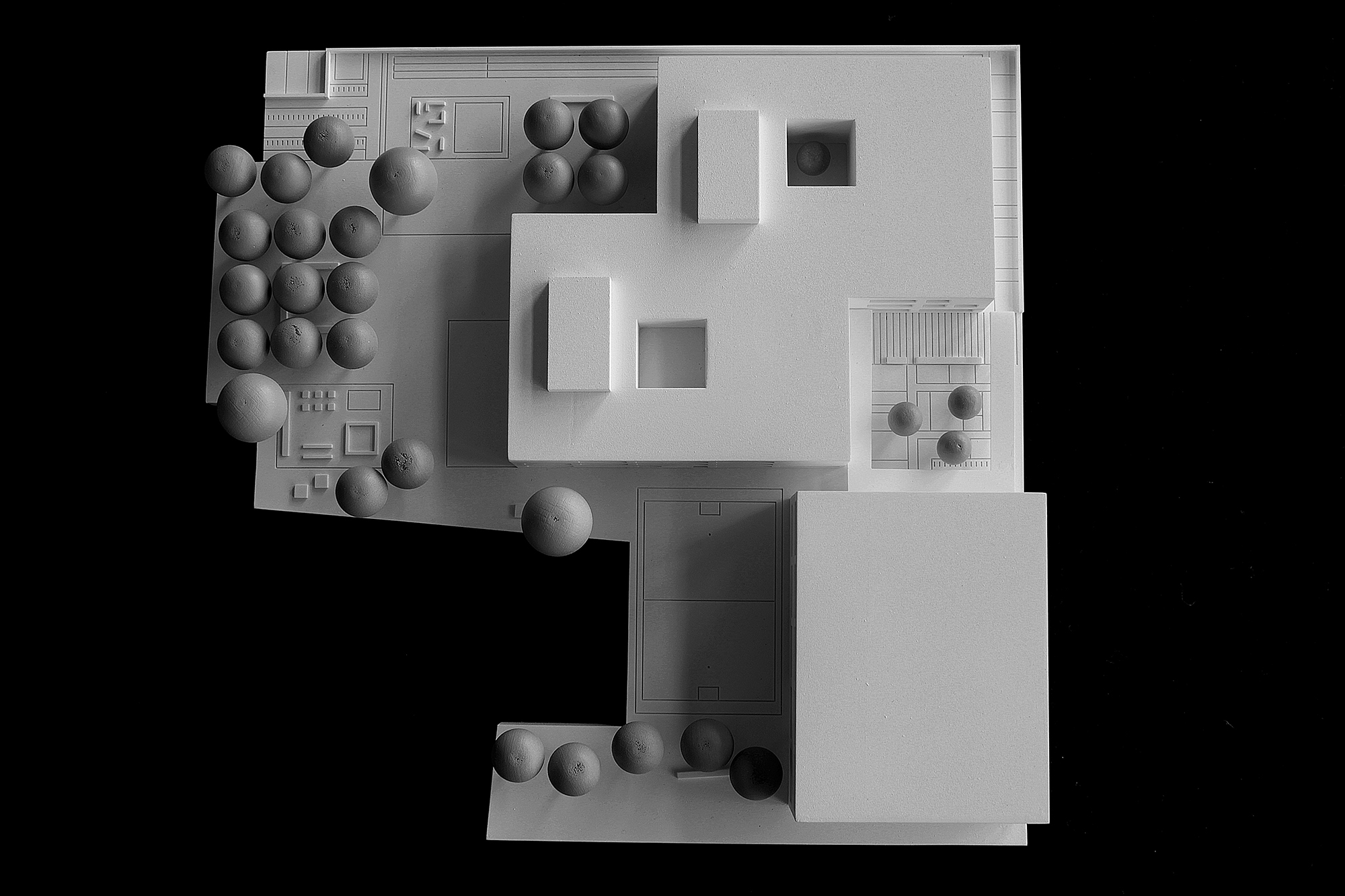The 3-storey primary school module forms an exciting building ensemble with the 1- to 2-storey sports hall modules, which adapts well to the 6 different locations in Berlin. The triad of modular buildings connects with the existing exciting urban spaces and creates diverse and usable outdoor spaces. In adapting the modular buildings to the different locations, the pergola takes on the role of a passe-partout. In interaction with the buildings, it frames the gardens and open spaces and creates memorable and recognisable places of learning.
The identical spatial programme makes it possible to build the 6 modular primary schools according to the same principle. 2 staggered structures with inner courtyards form the basic structure of the school buildings. Interplay with the different basic building volumes of the sports halls creates surprisingly diverse spatial situations that never become uniform or boring. The adaptation of this “triad” to the respective urban situations is also supported by the colour concept of the façades made of ceramic rods of different lengths. All colour tones appear in the different façades, but with varying intensity and frequency. Thus, through the colours, the individual school locations are connected with each other and form a (colour) family.
The shell of the building is a modular, expandable skeleton made of square prefabricated reinforced concrete columns and prefabricated steel composite beams spanning between them. The ceiling construction is a wood-concrete composite construction.
- The design proposal received a distinction.
